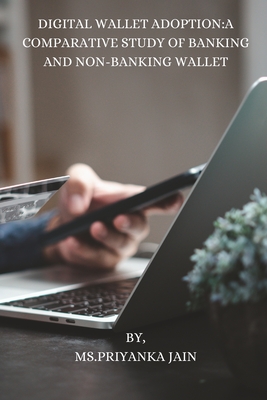You are here
Back to topdigital wallet adoption: a comparative study of banking and non banking wallets (Paperback)
Currently Backordered
Description
Banking has its history as old as the civilization. Babylonians were the first bankers who developed banking from their temples in the early 2000 B.C. Even in the Egyptian and Phoenician history banking was found in the name of "rudimentary bank practices". Some economists believe that the word "banking" was originated in German which means heap or mound of money while some believe that it is derived from French word "banque" meant as "bench" where business is being transacted. The word banks are being defined in ancient times as a merchant's banks i.e. they use to grant loans to the traders and farmers who use to carry transaction between various cities around the world. The above-mentioned practice was being followed in parts of Sumeria, Assyria and India in 2000 B.C. while in Roman emperor period and in Greece loans were provided by the priest of temples. During the 14th century the Bardi and Peruzzi families dominated banking with the several branches being established in various parts of Europe. Giovanni Medici in the year 1397 established Medici Bank which was the most famous Italian bank of the world. "Conversely the view that the word bank originated from the word bank or banco, seems to be more convincing, as it is used in the establishment of the Bank of Venice, which is supposed to be the most ancient bank". Banks in India is not a new concept. Banking started during the Vedic period. Manu, the great jurist wrote about advances, interest and deposits. With the help of indigenous banks trade and commerce flourished in the country during Mughal era. Money lending to the traders was the main function of indigenous banks. Proper establishment of banks took place in the year 1770 with the coming of banks of Hindustan which was later on liquidated. In the year 1786 General bank of India emerged as the second bank of the country. Later, the agency houses took over banking business during the British East India company period. Banking in India, started in the real sense with the coming up of State Bank of India which is the oldest bank in the country and its still functional. SBI was established in 1806 as the Bank of Calcutta. Later on, it was renamed as Bank of Bengal in the year 1809. Presidency government of the country established two other banks namely Bank of Bombay in 1840 and Bank of Madras in 1843. In the year 1921 all of the three presidency banks were merged to form Imperial Bank of India in the pre independence period which was known as State Bank of India in post-independence period.
